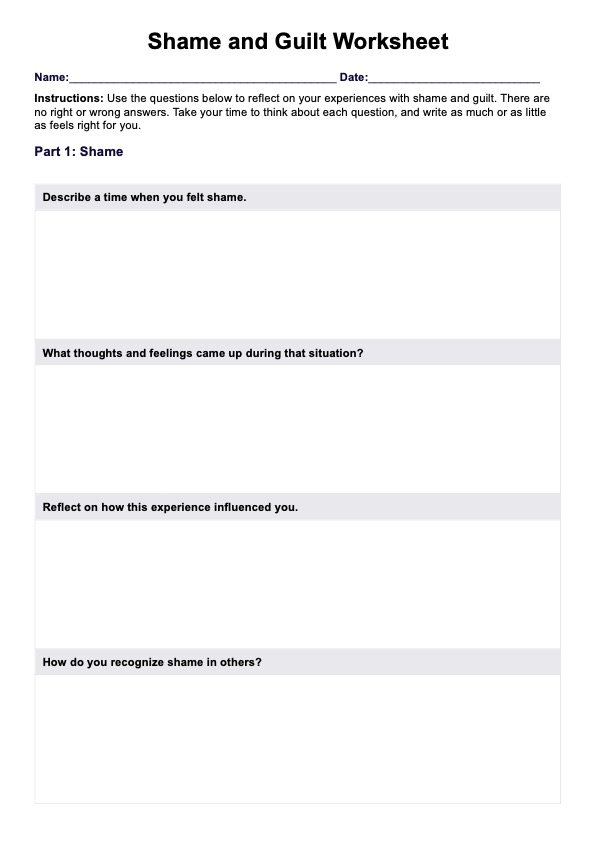The worksheet helps clients explore feelings of shame and guilt—two negative emotions often tied to one’s sense of self and identity. Shame arises when a person feels flawed or unworthy, while guilt focuses on specific actions, like a hurtful act toward another. By reflecting on these feelings, clients can better understand emotional responses, gain hope for growth, and improve how they cope with difficult experiences.

Shame and Guilt Worksheet
Explore our comprehensive Shame and Guilt Worksheet guide to process and manage these complex emotions effectively for better mental health.
Shame and Guilt Worksheet Template
Commonly asked questions
Yes, the worksheet is helpful for clients overwhelmed by emotions like anger, depression, or self-blame. It encourages reflection on past actions and responses, helping clients escape cycles of guilt and shame. By focusing on forgiveness—whether for oneself, a child, a husband, or others involved—the worksheet fosters emotional healing and personal growth.
Shame and guilt often affect relationships, whether with children, partners, or others. The worksheet helps clients reflect on how these emotions influence interactions, identify where they may have hurt someone or acted morally wrong, and lead them to attempt making amends. It ultimately supports building healthier relationships by improving understanding and emotional responses.
EHR and practice management software
Get started for free
*No credit card required
Free
$0/usd
Unlimited clients
Telehealth
1GB of storage
Client portal text
Automated billing and online payments











